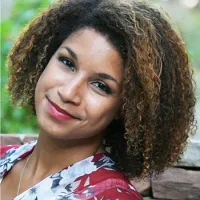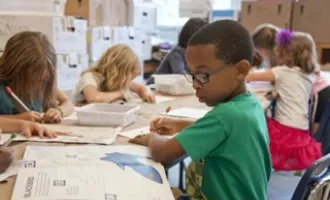From Bench to Bedside
What does it take to repair a broken heart?
The Biomedical Sciences (BMS) graduate program at UCSF is instilling in us profound respect for medical practitioners, and the awareness that our daily work in the lab — monotonous hours of pipetting and repeatedly failing for the slim hope of success — eventually leads to better understanding, tools, and therapies to repair damage in the human body.
To repair a broken heart, it takes doctors, researchers, and those bridging the gap between a test tube and human.
Doctors and researchers alike share responsibility in building, supporting, and traversing this two-way bridge, from “bench to bedside” and back again, bringing better disease understanding to researchers and advances to therapies.
Dr. Scott Kogan, MD professor at UCSF since 1998, spearheaded a mini-course this that is commonly referred to as GEMS (Graduate Education in Medical Sciences). These 45 hours spread over three weeks were designed to position graduate researchers to connect basic science to unresolved clinical problems, encouraging us to ask, “How might my work be applied to advance human health?”
In the GEMS course, we began the day with lectures explaining the basic biology and function of an organ system, like the cardiovascular system.
Then, doctors spoke about diseases in this system from the clinical perspective — everything from diagnosis and available treatments, to how they weigh the needs of each patient.
Finally, armed with an understanding of the biology and the medicine, we got to meet patients and hear their stories.
Each section was covered in one to two days, and included Fetal-Maternal, hematopoietic, cardiovascular, metabolic, infectious, and neurologic disease.
“[GEMS] provides an opportunity to gain insight into the interface between basic research and advances in clinical medicine... this training is valuable for anyone with an interest in the biology of disease,” says Scott Kogan.
Doctor’s save people – from the pain of a sprained ankle in the recklessness of childhood, to the ache of a literally broken heart. The ankle requires only a careful wrap and a few weeks of mindfulness, but a broken heart requires dexterous hands to repair the damage, the correct medication to alter the way your blood behaves in your veins, and if the damage is severe enough, a broken heart needs to be replaced.
Doctor’s save people, but researchers discover the principles behind each medication and medical intervention. To repair a broken heart, we need to understand that a heart attack results from a blood clot in a vessel that feeds heart muscle. Blood clotting is a protective mechanism when you have a cut, preventing you from bleeding continuously.
When damage or inflammation occurs within an intact blood vessel, like the gradual accumulation of cholesterol containing plaques, blood clotting can block blood flow to important parts of the body, like heart muscles. Without access to oxygen and nutrients, heart muscles relying on that blocked blood vessel grow weak and eventually starve to death.
You feel a heavy pressure on your chest, like the weight of the world settled on your rib cage — a heart attack comes on suddenly and gives you very little time to respond.
You have about 20 minutes to unblock the blood vessel before heart muscles begin to die, and four hours before the damage to that heart region is irreparable.
To this feeling, we all seem to act the same, balling our hand into a fist and holding it to our breast, the image of defiance. It’s called the Levine sign after the American cardiologist who first described the response in the 1900s.
Doctors can guide a thin tube through your vessels to the site of injury and scrape away the blockage, or inflate a small balloon that widens the vessel and leaves behind a supportive stint.
To then repair the broken heart, we need to understand how to make a heart beat even after the death of heart muscle.
Because we understand how hearts regulate beat, doctors can put in a pacemaker device that regulates the electrical currents driving heart muscle contraction and relaxation, systole and diastole. If the muscle is too weak to beat at all, doctors can implant a left ventricular assist device (LVAD) that actively pumps blood so your heart doesn’t have to.
The best way to repair a broken heart, though, is to replace it entirely. For every 2,000 available heart transplants, there are 4,000 candidates — patients can spend years on the waiting list.
The LVAD buys us time, but it still requires carrying a battery pack everywhere you go, showering carefully so the tube coming out of your chest doesn’t get infected, and going in for surgery again to replace broken or worn down parts.
The LVAD is a temporary fix to allow you to keep living while you wait.
Doctors can also provide medication that actively suppresses the ability of blood to clot, thereby lowering your risk for another attack. This of course has caveats — blood clotting is important.
Currently, we cannot coax new heart muscle to form on its own, relying on machines, donors, and preventative drugs, but in the foreseeable future stem cell research may advance to the point of repairing or even growing human organ tissue.
Understanding the strengths and limitations of the LVAD may not directly impact a researcher studying stem cell differentiation into heart muscle cells, but it places your work in context. It’s inspiration.
Improved stem cell technology could revolutionize science, and several areas of medicine.
GEMS has an interesting history as a course for PhD students at UCSF.
Originally, the BMS program curriculum included an intensive two-quarter course series on human tissue and organ biology. These courses were structured into blocks on human organ systems, where students learned about the organ in heath and disease and then observed pathological tissue in lab.
GEMS was originally designed as a course for PhD students outside of the BMS program who wanted exposure to human biology and disease, led by MD professor Andrew Leavitt.
Restructuring of the BMS curriculum lost the extensive training in human Tissue and Organ biology. The replacements were Cell Biology and Genetics, workshops in new technology and qualifying exams practice. GEMS suddenly became a popular elective for BMS students.
Loss of the GEMS course after 2015, due to cut funding, spurred Kogan to mix elements of GMS into the required BMS curriculum in 2016, and to later lead a condensed version as a mini-course spring of 2017.
BMS student feedback has been mixed, though.
Some students firmly believe the premise of GEMS is powerful, and potentially even shaping in terms of research direction.
Other students don’t want to invest the hours required for broad medical immersion in human disease, a course arguably more philosophically enlightening than practically applicable. The perspective is understandable, given the balancing act first year between required courses, presentations, fellowship applications, and lab rotations.
Again, do you need to understand the LVAD to work on making heart muscle out of stem cells?
I’d argue that understanding the context within which your work resides is critical — it allows you the information to defend your research to those that may not value science as acutely, and can spark new connections you would otherwise have ignored.
Latest student feedback suggests moving GEMS to BMS bootcamp, which takes place the first few weeks of September before classes have started for first-years. Bootcamp is led by upper year BMS students, and is intended to prepare incoming students for graduate school at UCSF.
BMS course directors, including Mark Ansel and Scott Kogan, meet in a couple weeks to decide what form GEMS will take next year.
Kogan believes this course can provide context for researchers in biomedicine, and encourages students to “think across disciplines and fields to advance science and medicine.”
As ever, the BMS program is open to student feedback – don’t hesitate to reach out and share your thoughts. And if you have the chance? Take this class!



